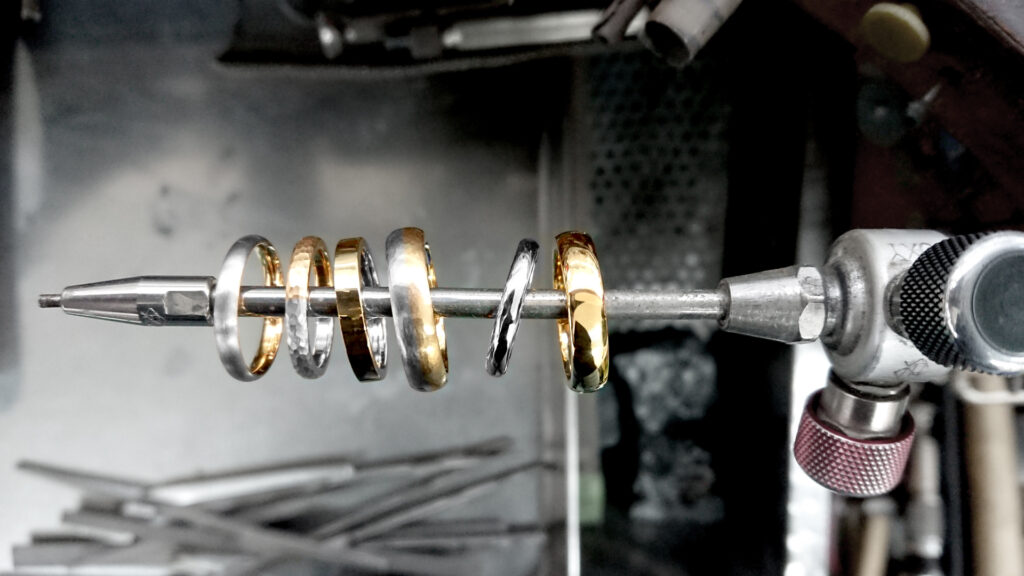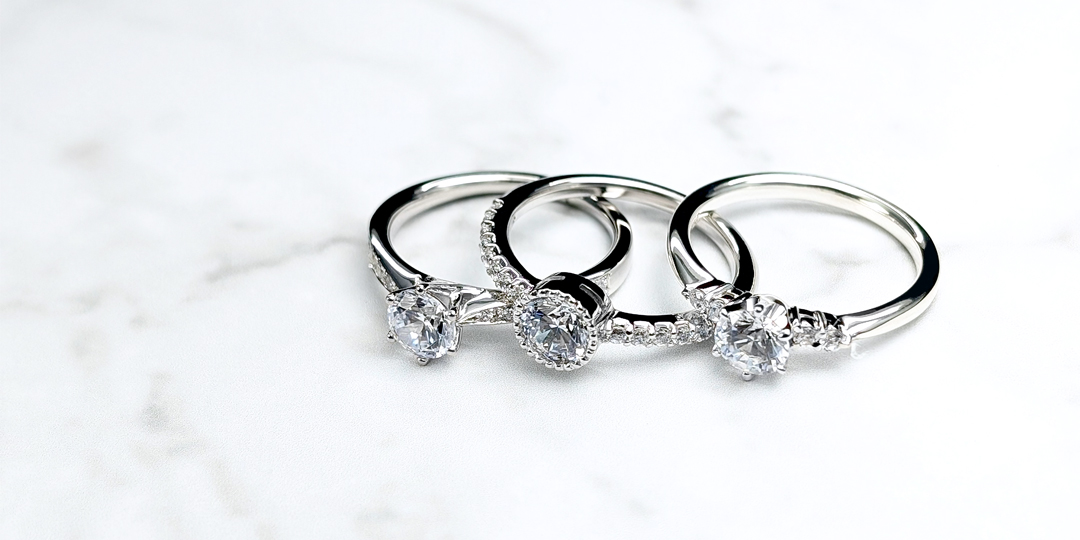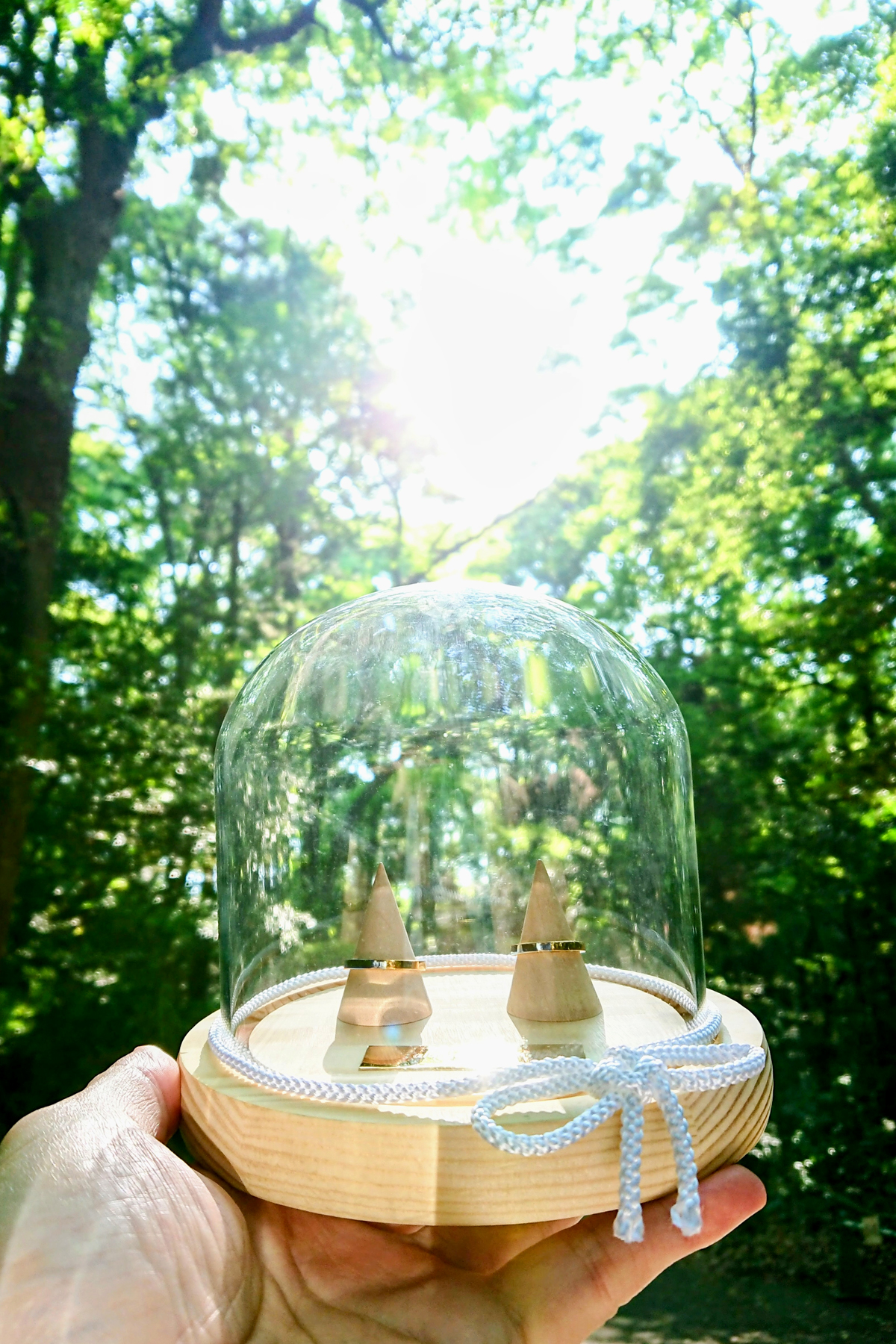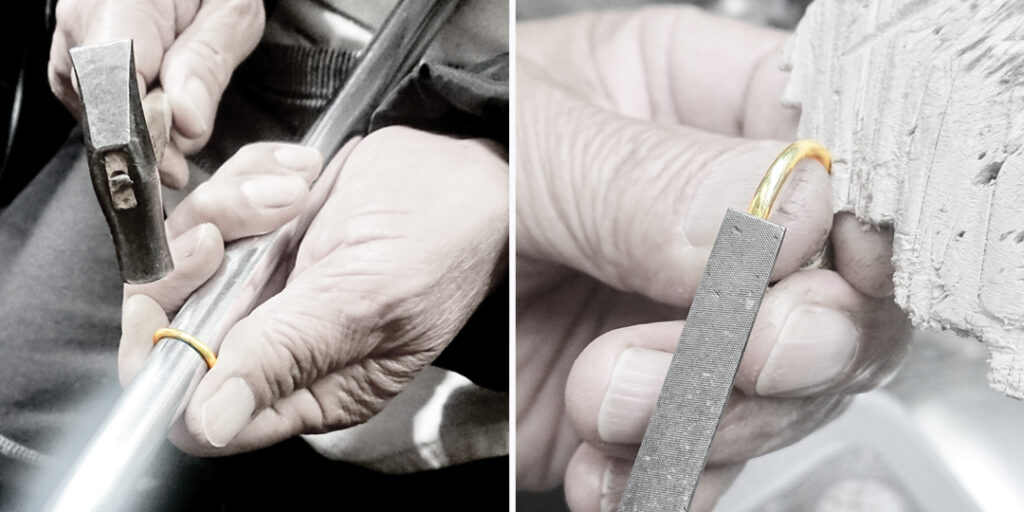Forging is a method of crafting rings by directly heating metal and shaping it through hammering or applying pressure.
Rings made through forging are highly durable and strong, making them perfect for a lifetime of wear and care.
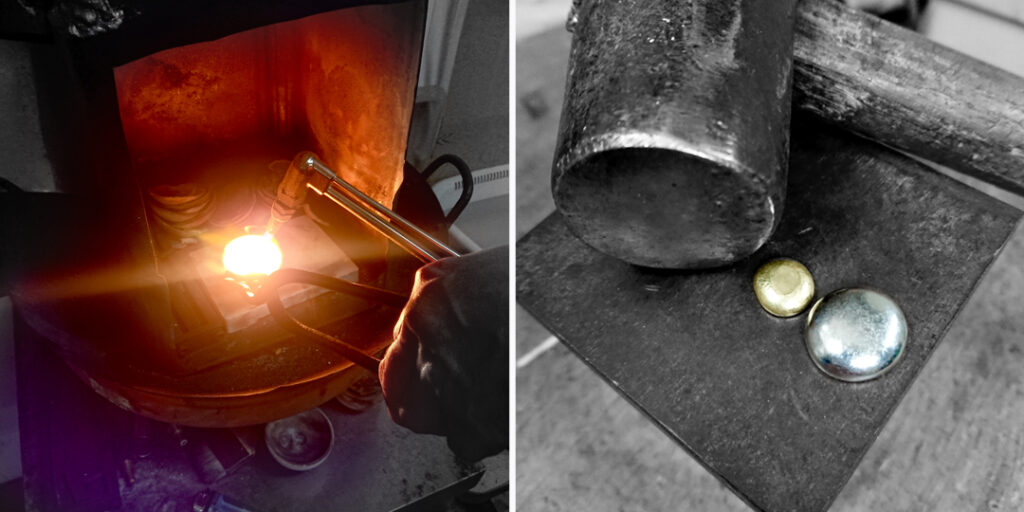
Strength and Durability
In forging, metal is heated and repeatedly hammered or pressed into shape, aligning the crystal structure and increasing density. This results in rings that are exceptionally strong and durable.
As a result, forged rings are resistant to deformation and scratches, allowing them to maintain their beautiful condition over time, even with daily wear.
Exquisite Beauty
In the forging process, metal is heated and repeatedly hammered or pressed, eliminating bubbles and density inconsistencies, resulting in a beautifully finished product.
This enhances the effect of both mirror and matte finishes.
Unity and Comfort
In forging, the interior of the ring is free from bubbles and voids, and the density is uniform, resulting in a very smooth surface finish.
This uniform internal structure creates a sense of unity, allowing the ring to fit securely on the finger and providing a comfortable wearing experience.
Additionally, because the ring is resistant to deformation, its shape and size remain stable over time. As a result, the fit is less likely to change, ensuring continuous comfort.
Techniques Steeped in History and Tradition
Forging is a technique that has been passed down since ancient times, and each ring carries a sense of history and tradition.
In particular, Japan has developed forging techniques since ancient times, gaining renown for the production of Japanese swords. Swordsmiths pass down their skills from generation to generation, valuing the inheritance of tradition. Thus, forging techniques continue to thrive across the ages.
Choosing a forged ring is a way to respect traditional craftsmanship and appreciate its spiritual value.
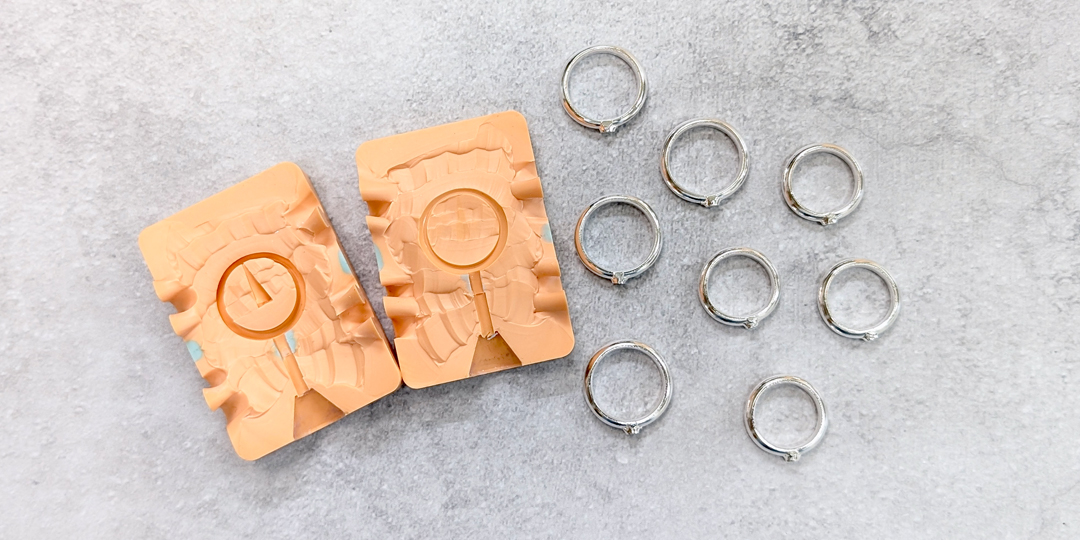
Differences in Manufacturing Methods
Forging” is a manufacturing method in which metal is directly heated and shaped by hammering or working it to create a ring.
In contrast, “casting” is a method where metal is melted, poured into a mold, and allowed to cool and solidify to form a ring.
Strength and Beauty
In casting, metal is poured into a mold and allowed to cool and solidify. During this process, bubbles can form, resulting in small cavities within the metal and inconsistencies in density. This can affect both strength and beauty.
In contrast, the forging method involves heating the metal and shaping it through hammering or applying pressure, which prevents the formation of bubbles and ensures uniform density. As a result, forged rings possess high strength and achieve a smooth finish.
Mass Production
Casting is suitable for mass production as it involves pouring metal into molds to create rings. There is no need to produce each ring by hand, allowing for an assembly line process.
On the other hand, forging involves crafting each ring by hand, making it unsuitable for mass production. This method takes time and requires highly skilled craftsmen. Because forged rings are handmade, even slight differences exist, which means that no two rings are exactly the same, adding a sense of rarity and uniqueness.
Design Freedom
In casting, complex designs can be produced all at once, offering high design freedom.
While forging may seem to have design limitations, it actually allows for creative designs depending on the craftsman’s skills. Forging is especially recommended for those who value having a one-of-a-kind ring.
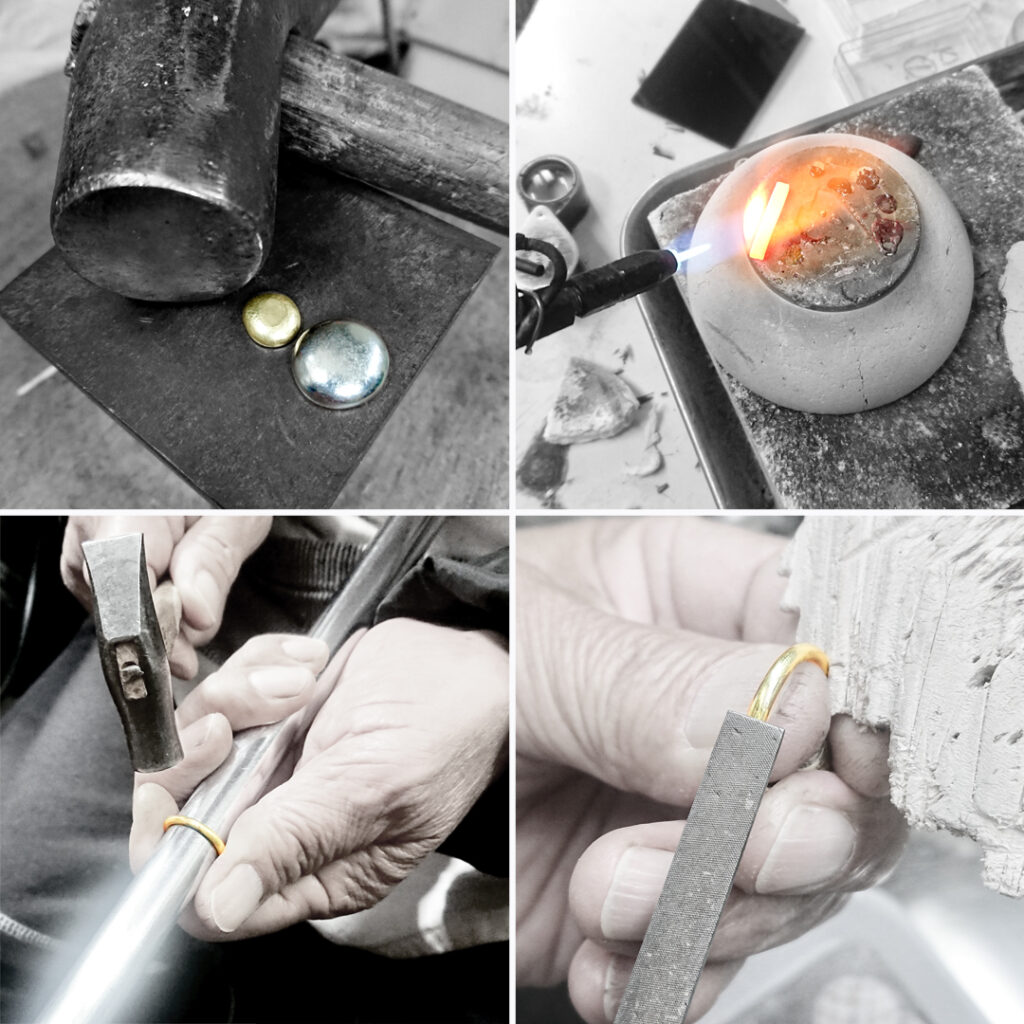
Advanced Skills and Experience
To master forging techniques, years of training and experience are essential.
Although forging—heating and shaping metal through hammering—may seem straightforward, the properties of different metals vary significantly. Factors such as differences in melting points, the flexibility of the metal, the amount of force applied, and ease of finishing require a very delicate skill set.
Gaining knowledge and experience comes from extensive practice, but sensitivity is also necessary. To create outstanding pieces, it is important to refine not only technical skills but also one’s artistic sensibility.
Rarity
In modern times, the number of craftsmen skilled in forging techniques is decreasing.
With the advancement of industrialization and mass production technologies, machine-made cast products have become mainstream, leading to a decline in the number of people preserving traditional forging skills. There is also a lack of training for young craftsmen, resulting in this technique not being passed down.
As technology wanes over time, ironically, its rarity is increasing.
Custodians of Culture and Tradition
Forging craftsmen not only create rings but also play a vital role in passing down the techniques and culture that have been inherited for generations into the future.
In Japan, particularly, techniques such as those used by swordsmiths are applied to ring making, and the country’s traditional forging skills are exceptionally refined.
The emotions that artisans invest in each ring go beyond mere products; they evoke a sense of history and the weight of tradition. This value is likely to increase even further in the future.
Introduction of Forging Craftsmen
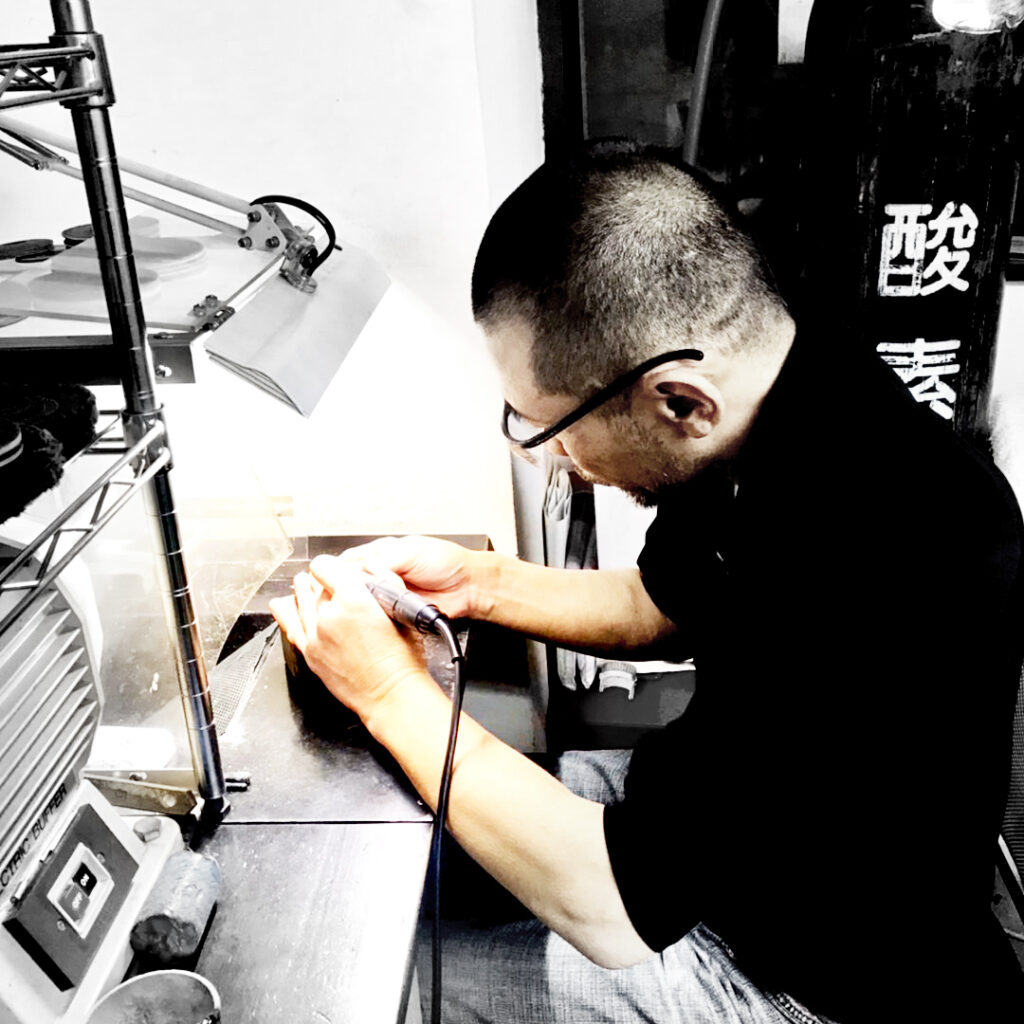
Azuma Ito
In the art of maximizing the allure of precious metals, even skilled craftsmen hold a deep respect for this technique.
The aesthetic sense in shaping is exceptional, showcasing a wonderful balance in design and a flowing quality in the craftsmanship.
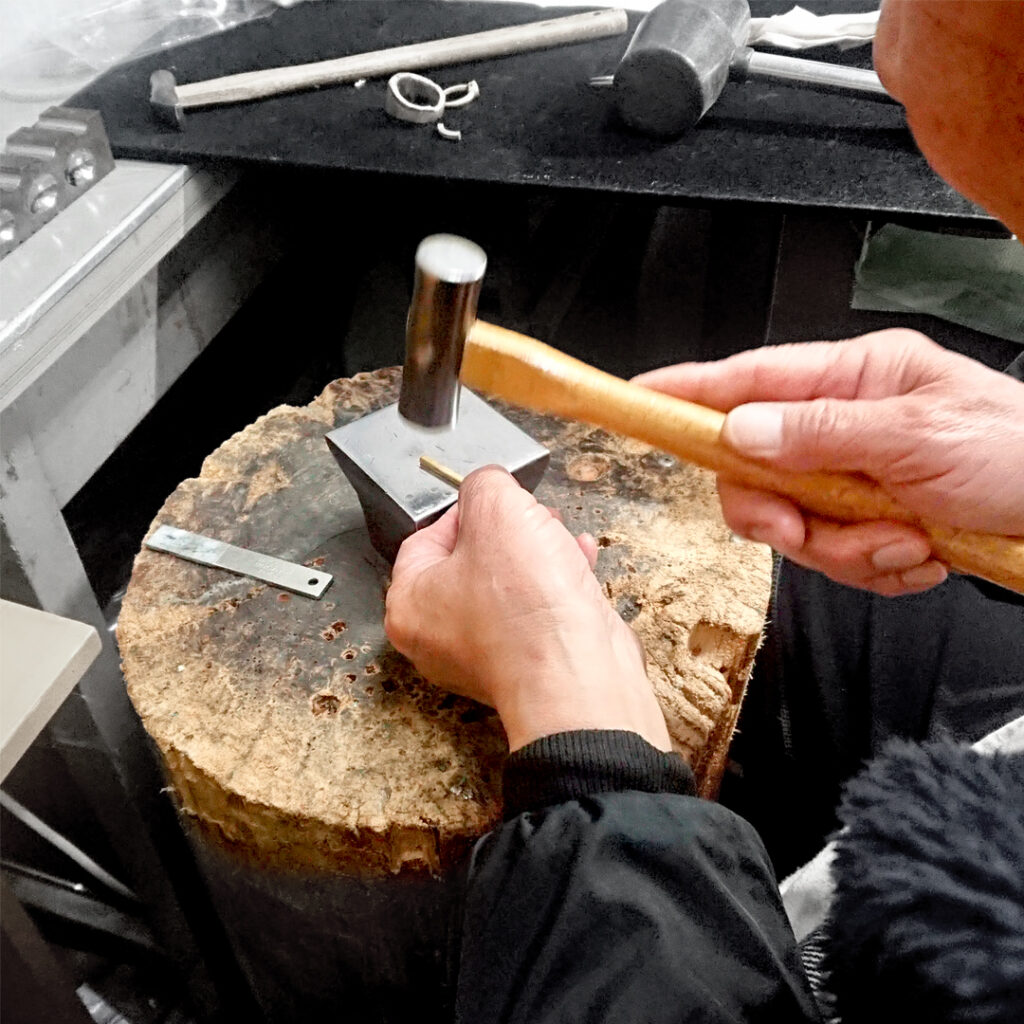
Fumio Kuniyoshi
The shaping that enhances the allure of gemstones is outstanding.
In their regular work, they specialize in high jewelry, with their most expensive piece being a ring featuring a 3-carat pink diamond, which surpassed 200 million yen.
Although not introduced here, we have many skilled craftsmen you can confidently rely on.
Please feel free to consult us about anything related to rings.
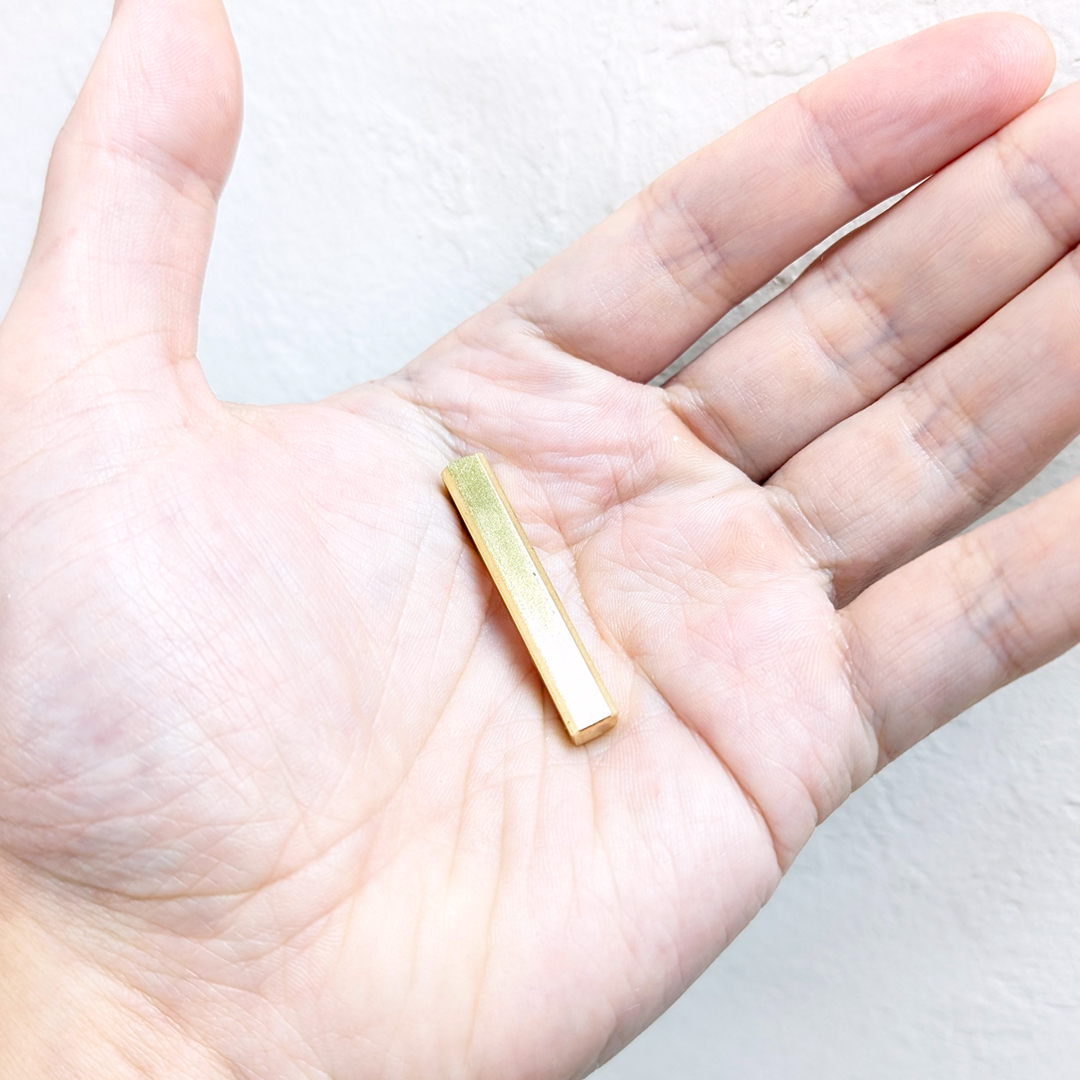
This rod is the raw metal. We will start from here.
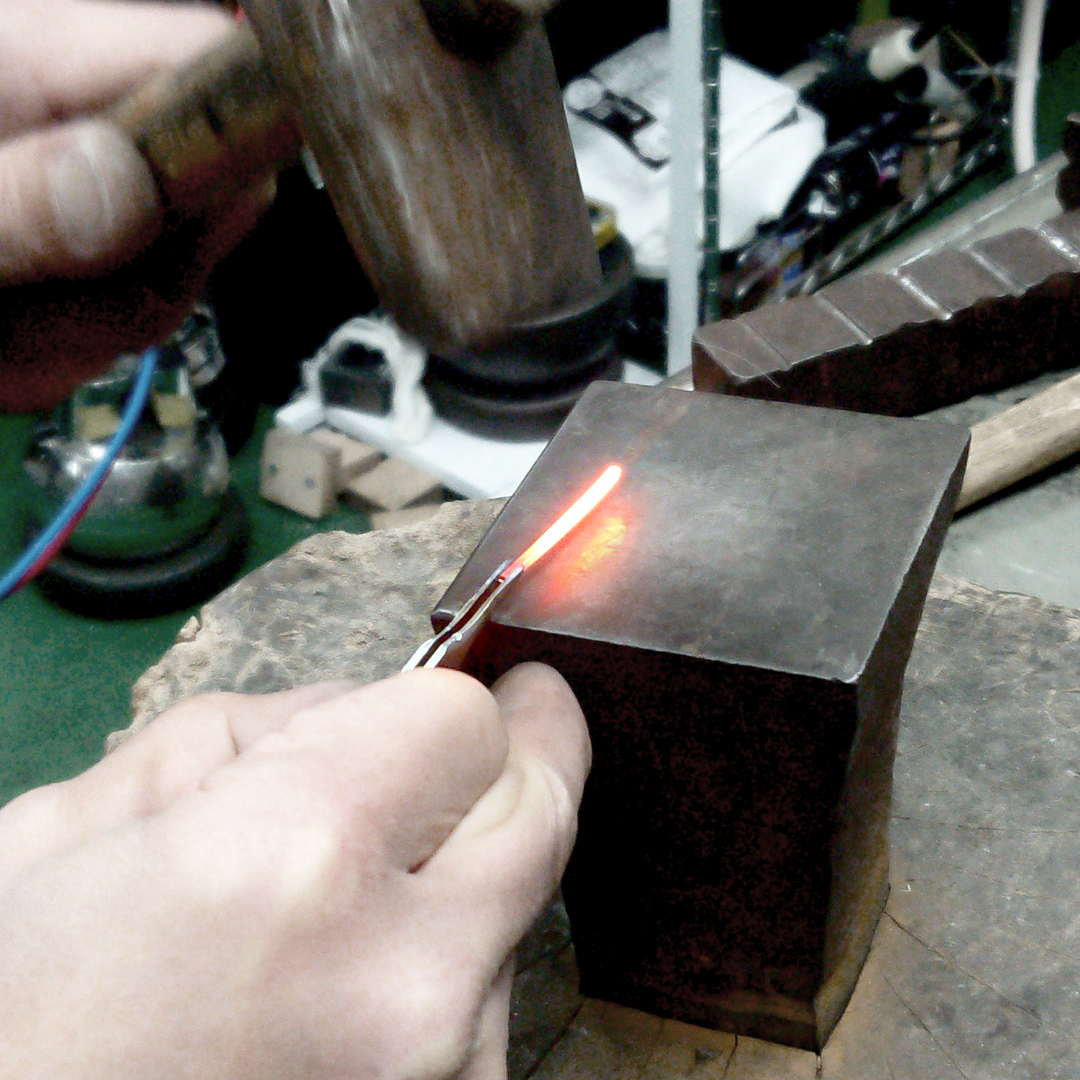
We heat it, then hammer and forge it to stretch it out.
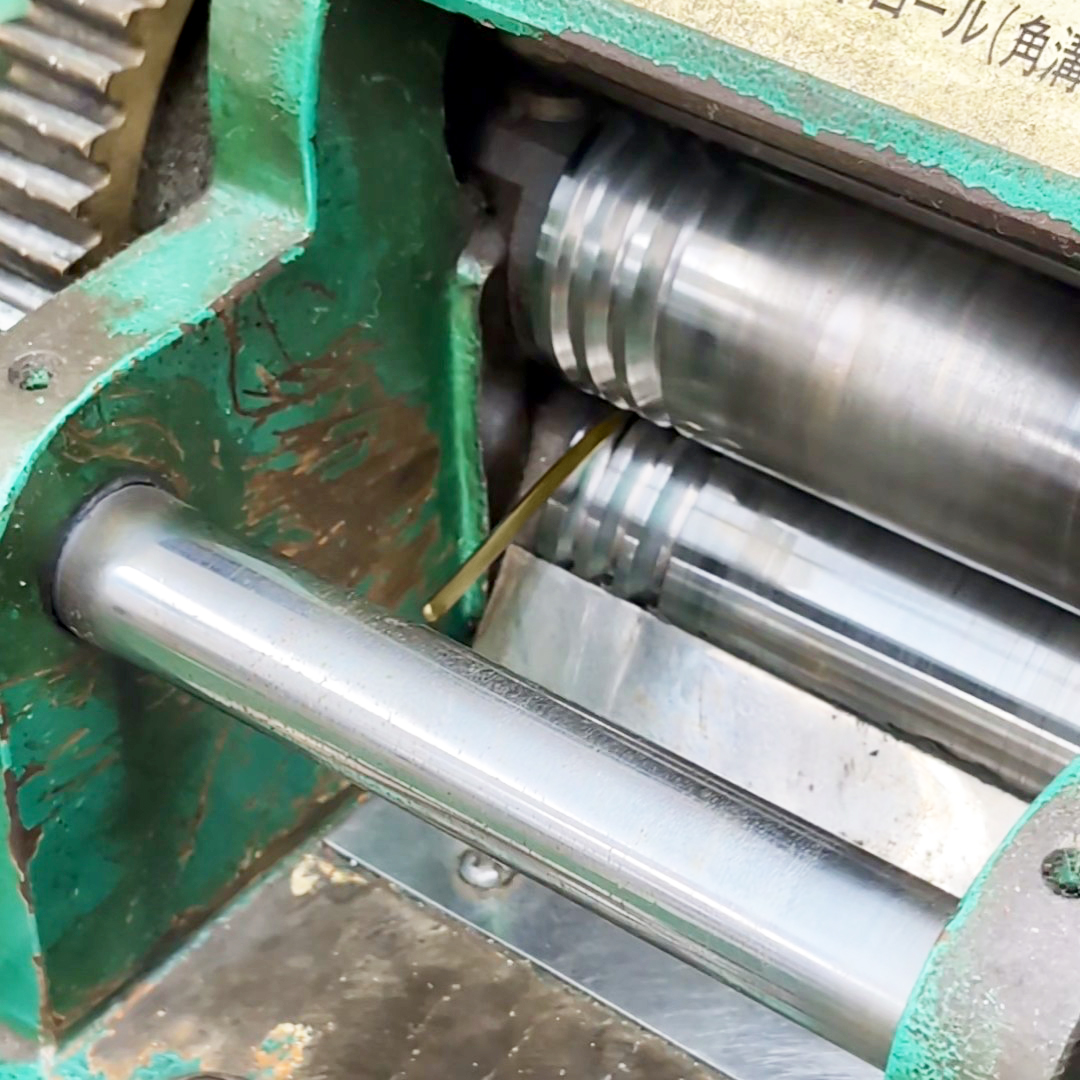
We compress it using a press machine and continue to forge it.
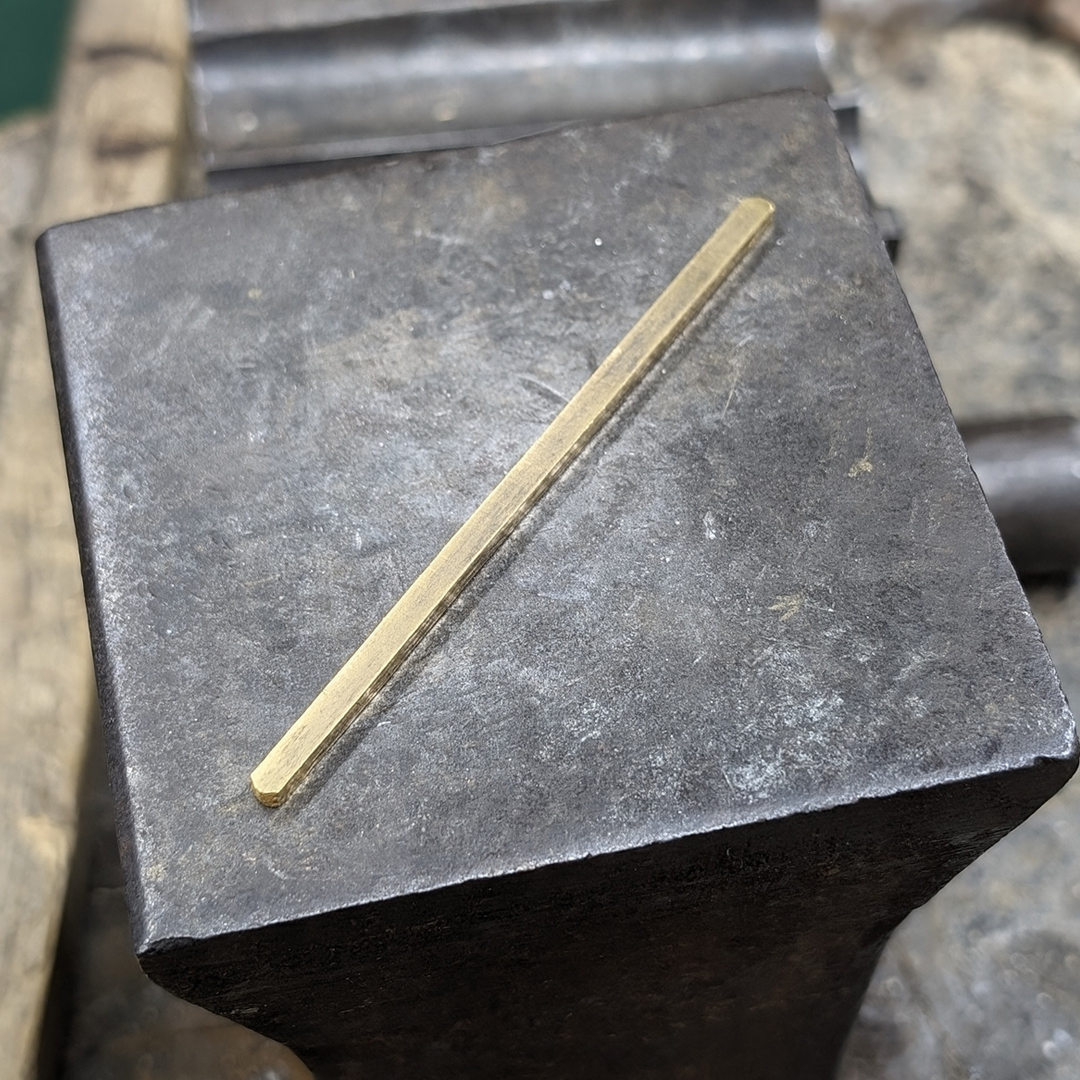
We adjust it to the necessary length for the ring.
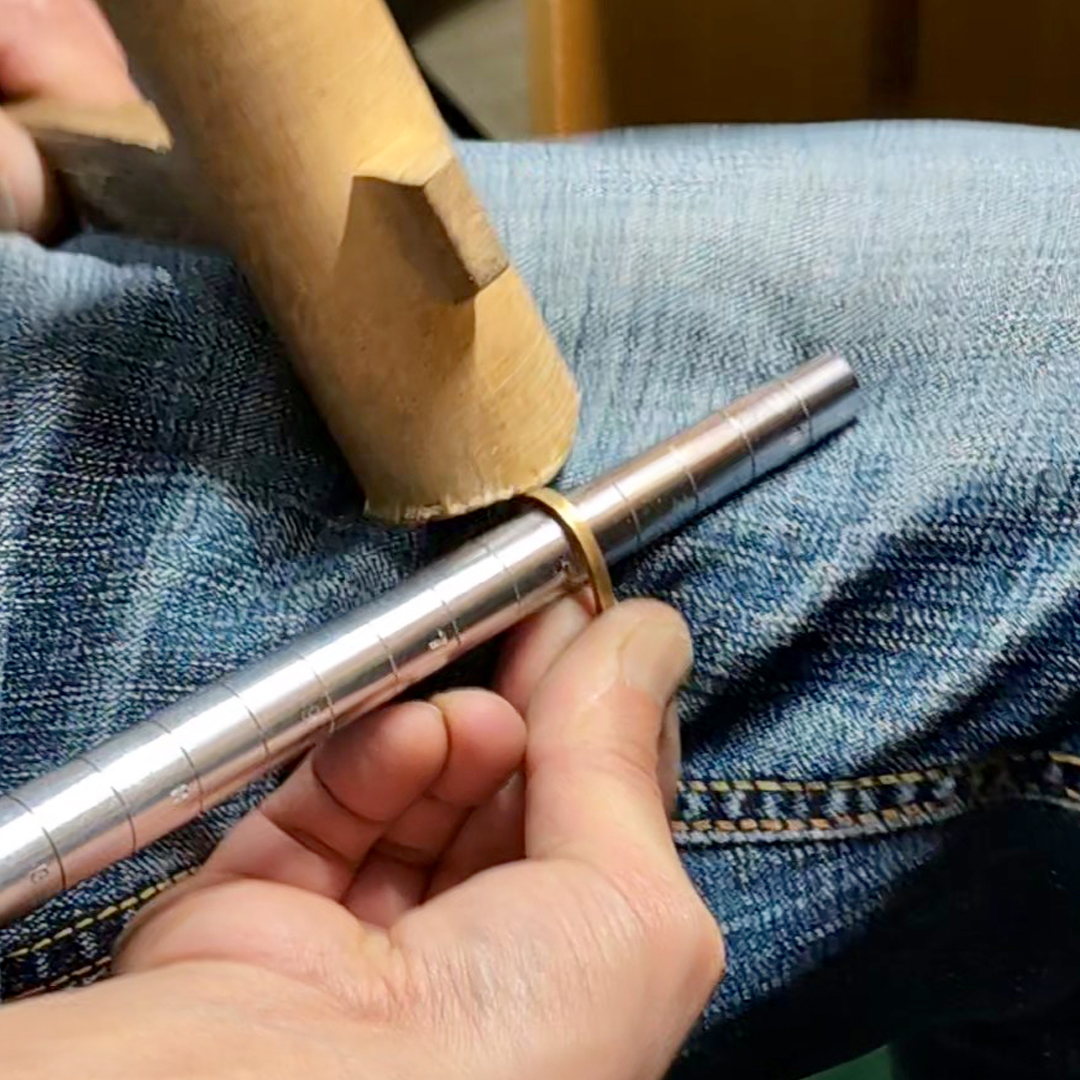
We round the raw metal into shape.
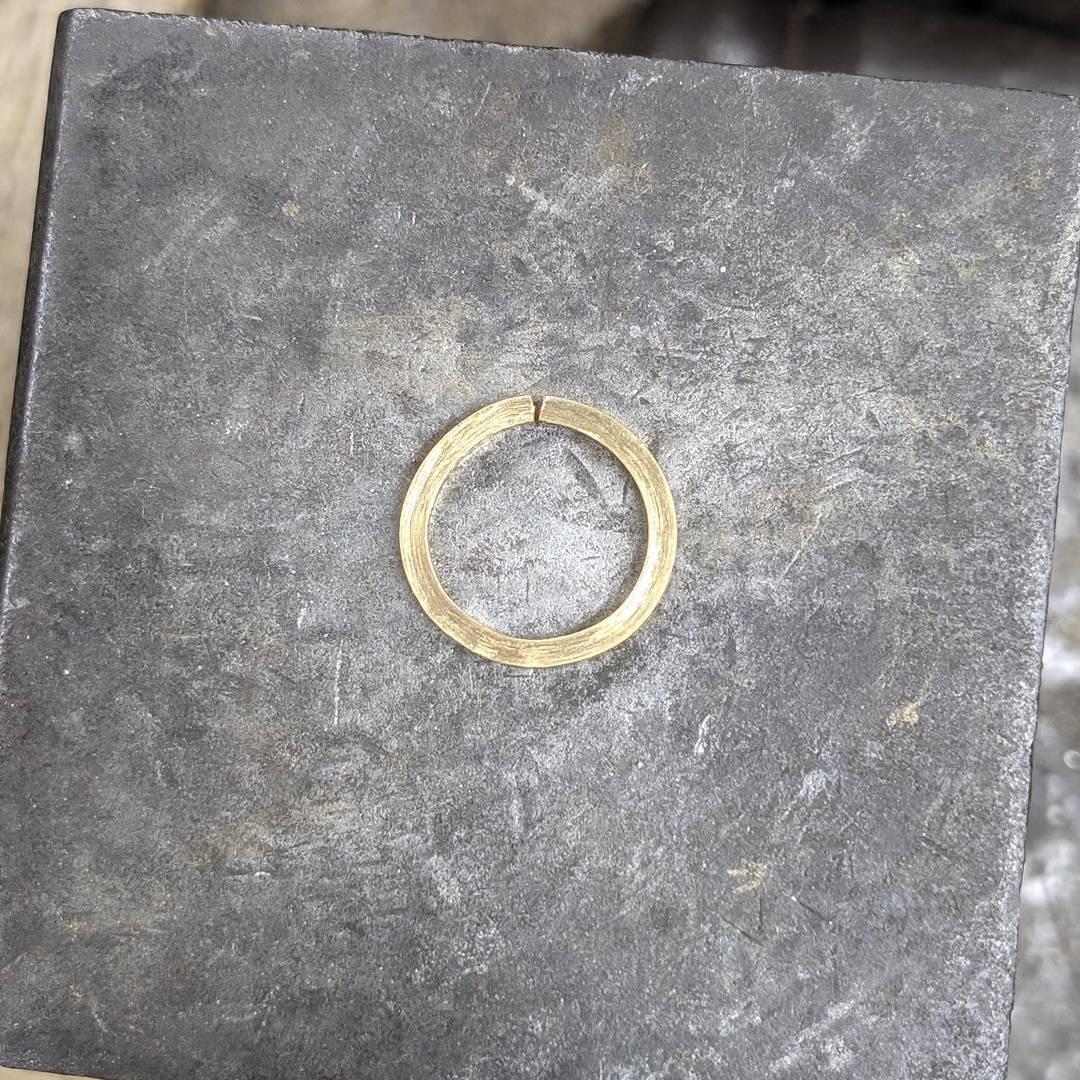
Once it is rounded, we join the ends together to create a perfect circle.
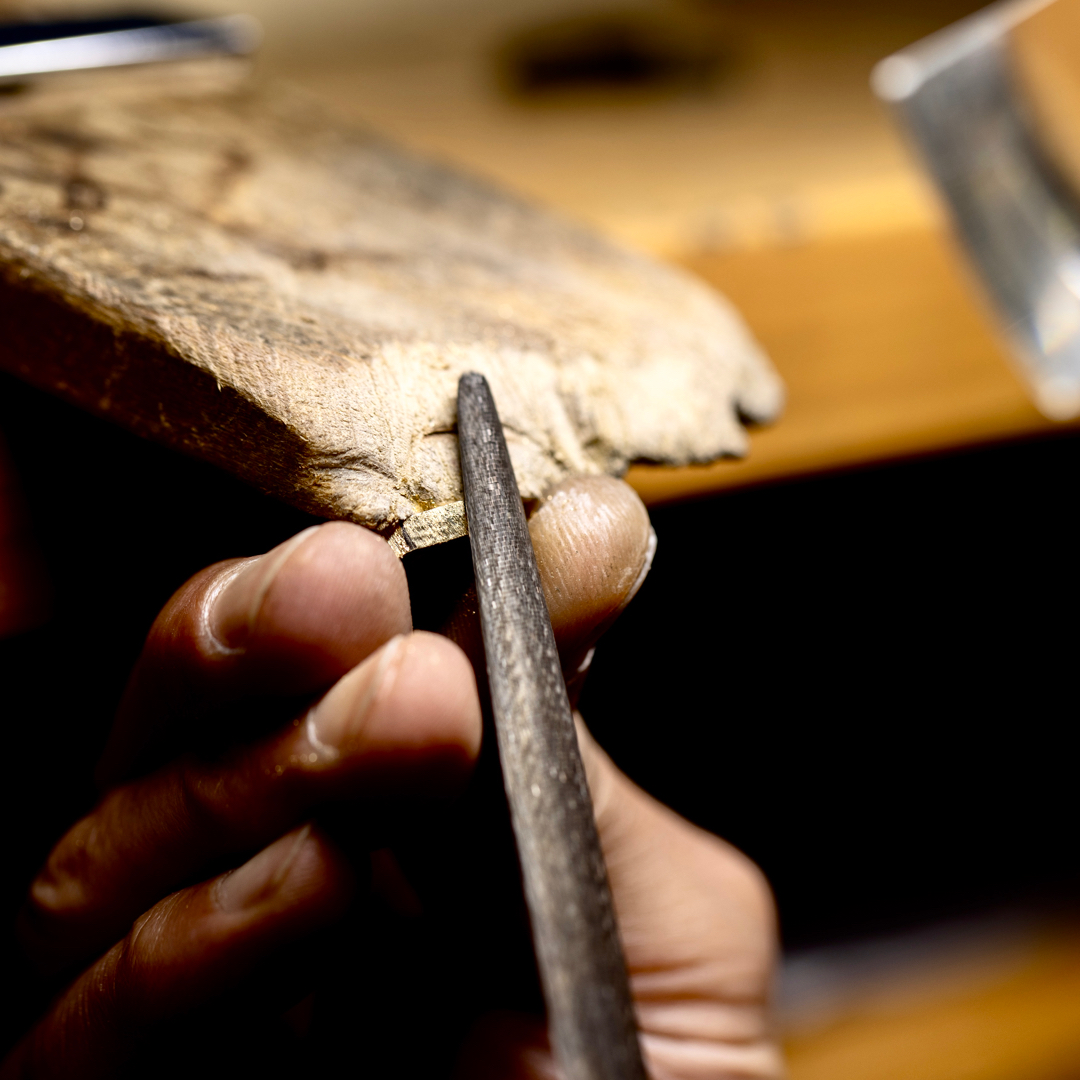
We manually shape it into the form of a ring.
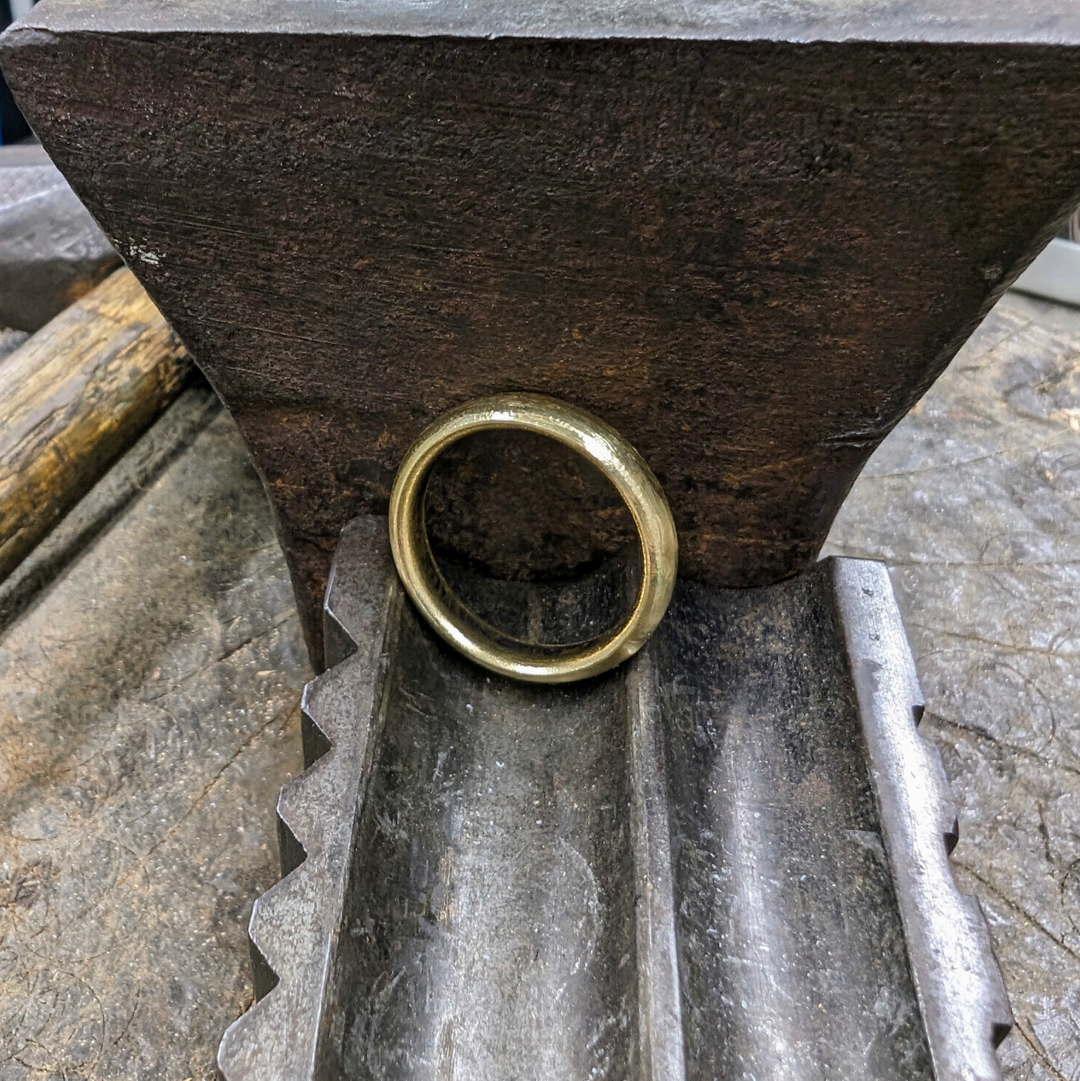
Finally, we apply the finishing touches.
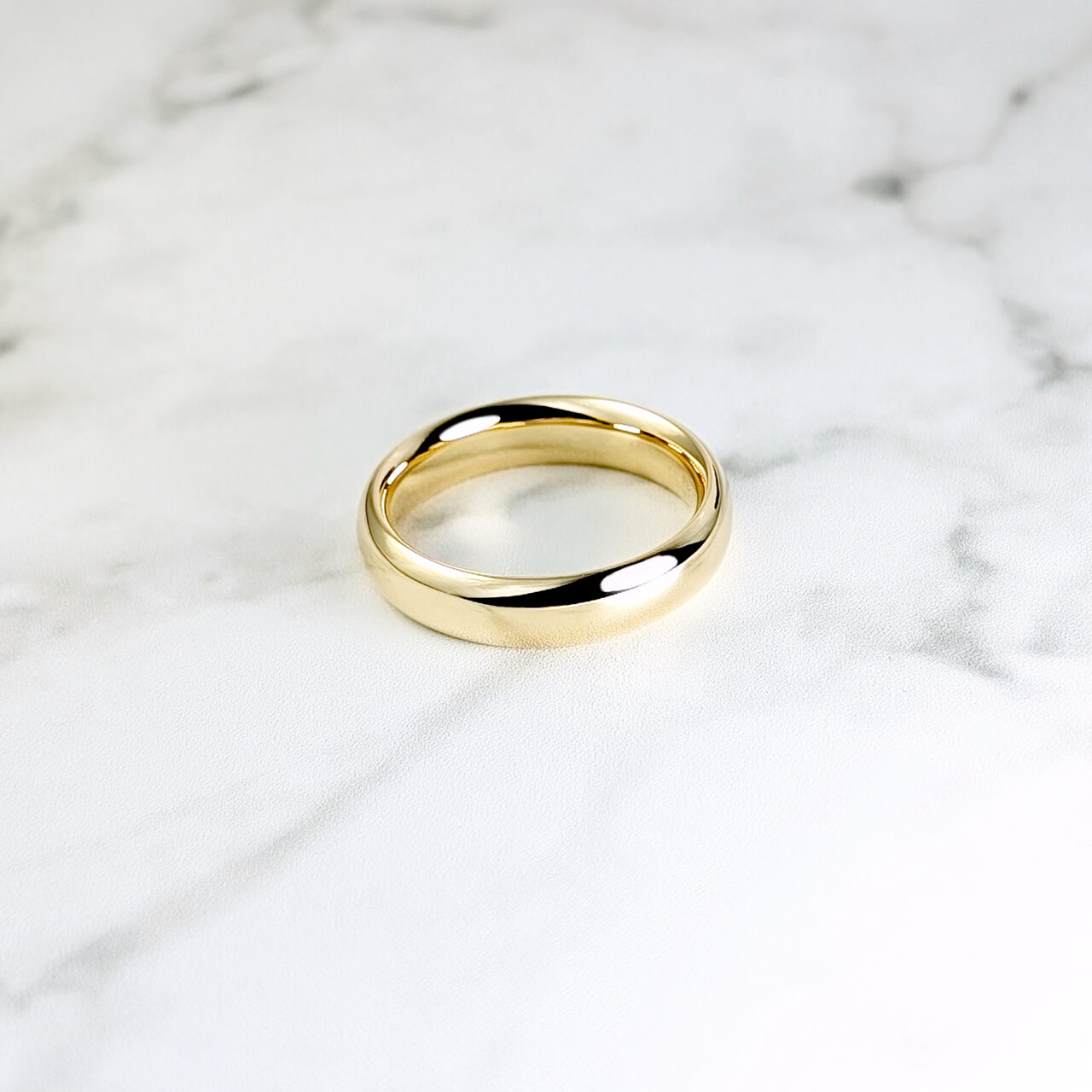
The ring is complete!
From Your Existing Jewelry to Material
It is possible to use your existing jewelry as material to create a new ring.
Thanks to the “forging method,” which involves directly hammering and forging the metal, we can transform your existing jewelry into something new.
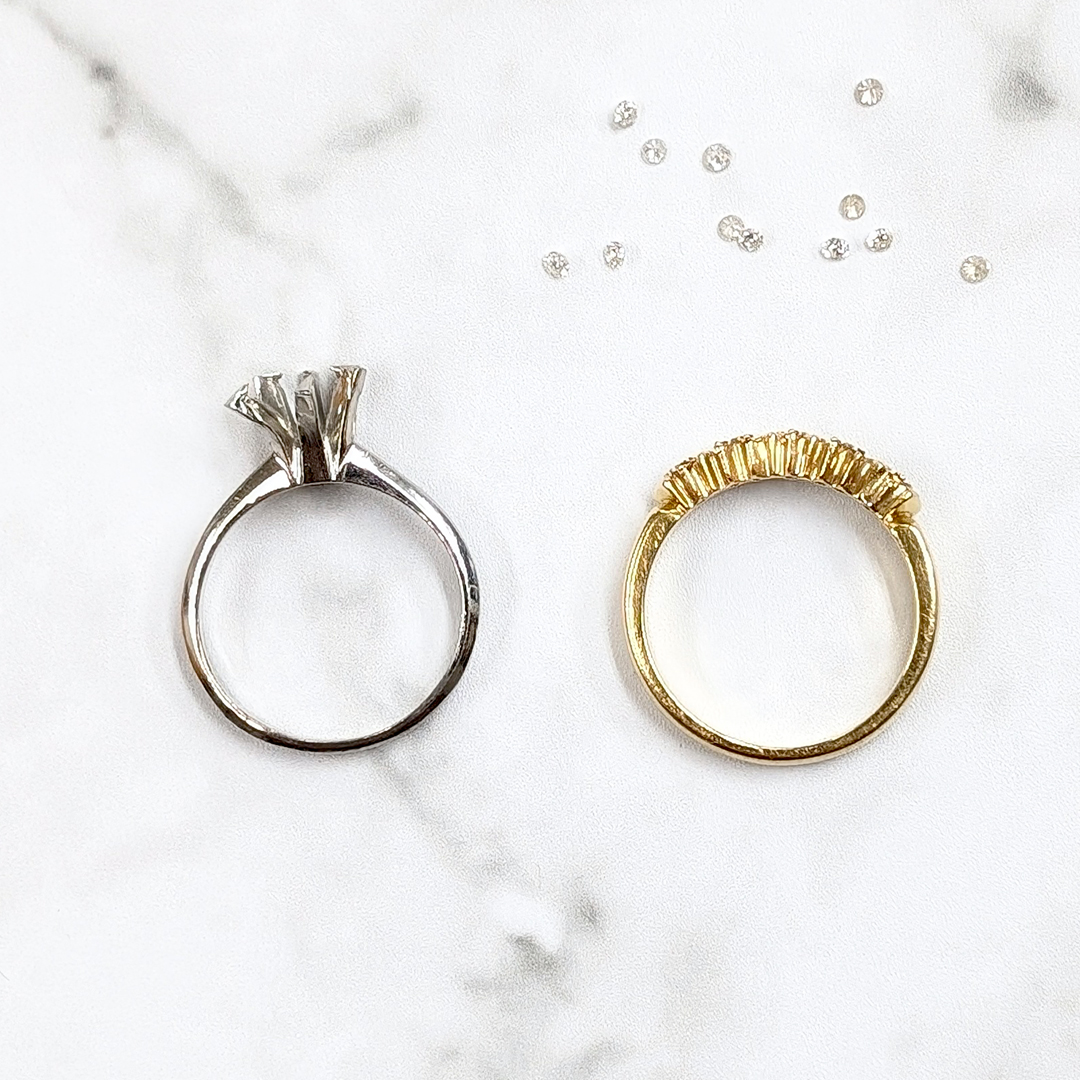
We remove any diamonds or other stones, leaving only the raw metal.
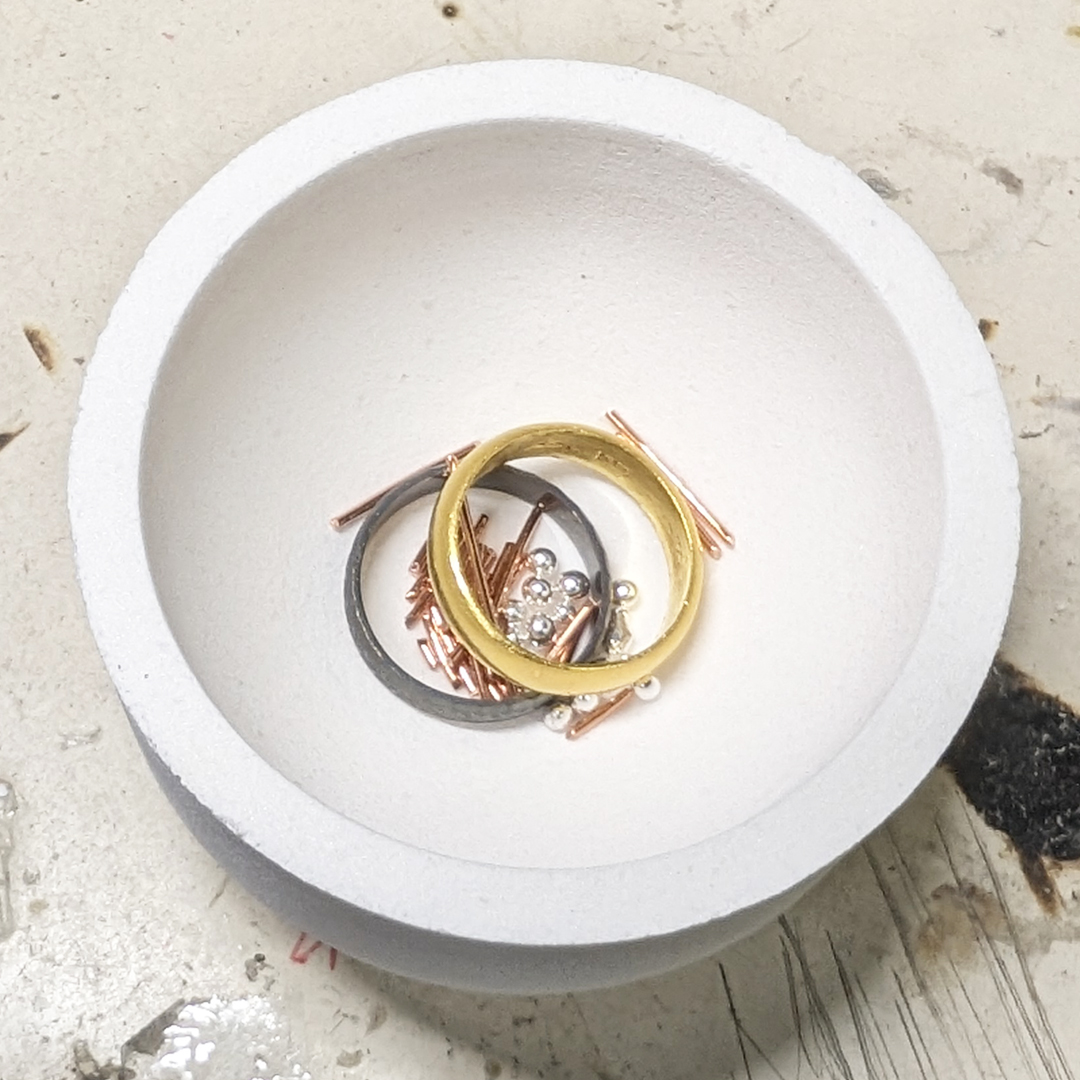
We prepare the necessary weight for the ring production.
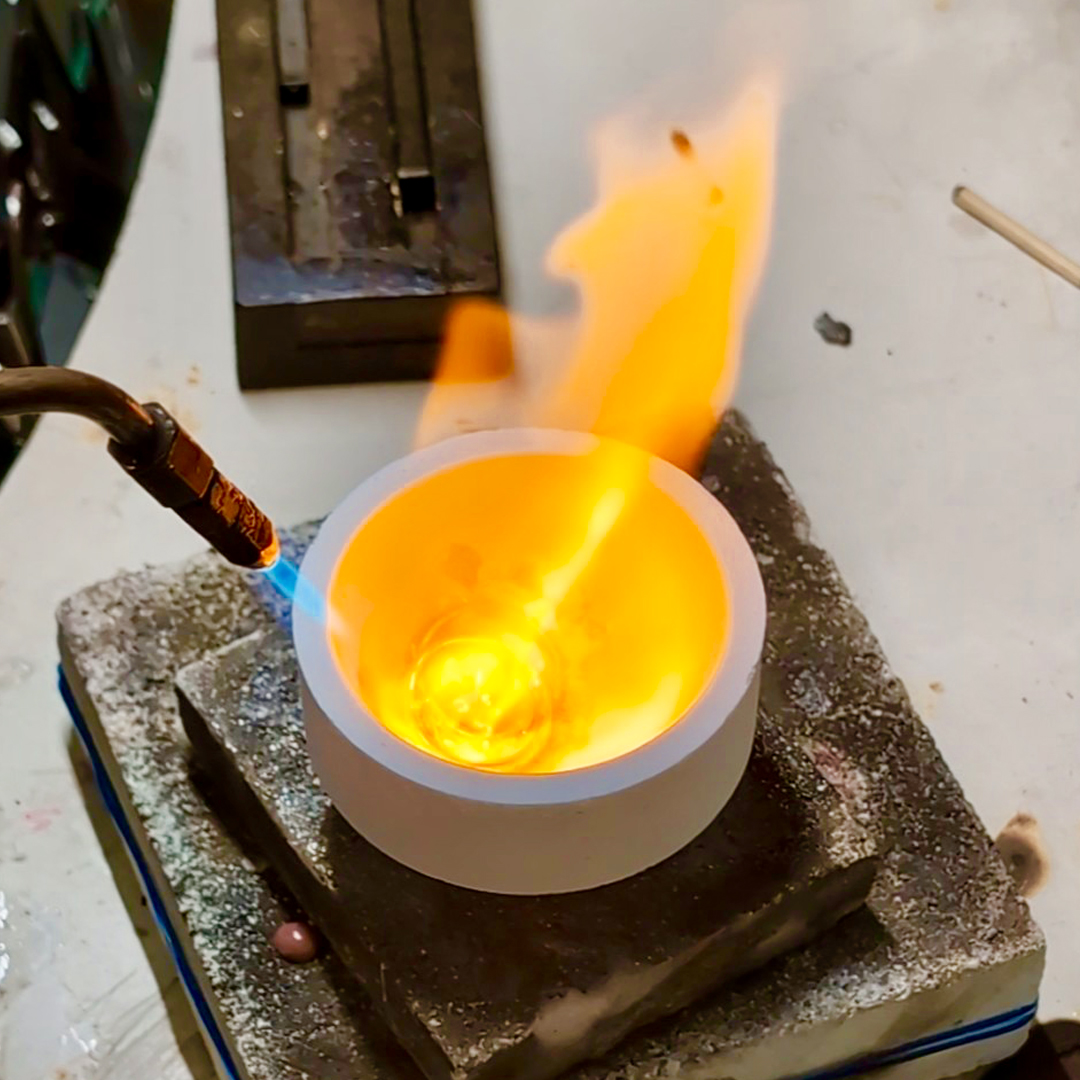
We melt the jewelry to create a mass of raw metal.
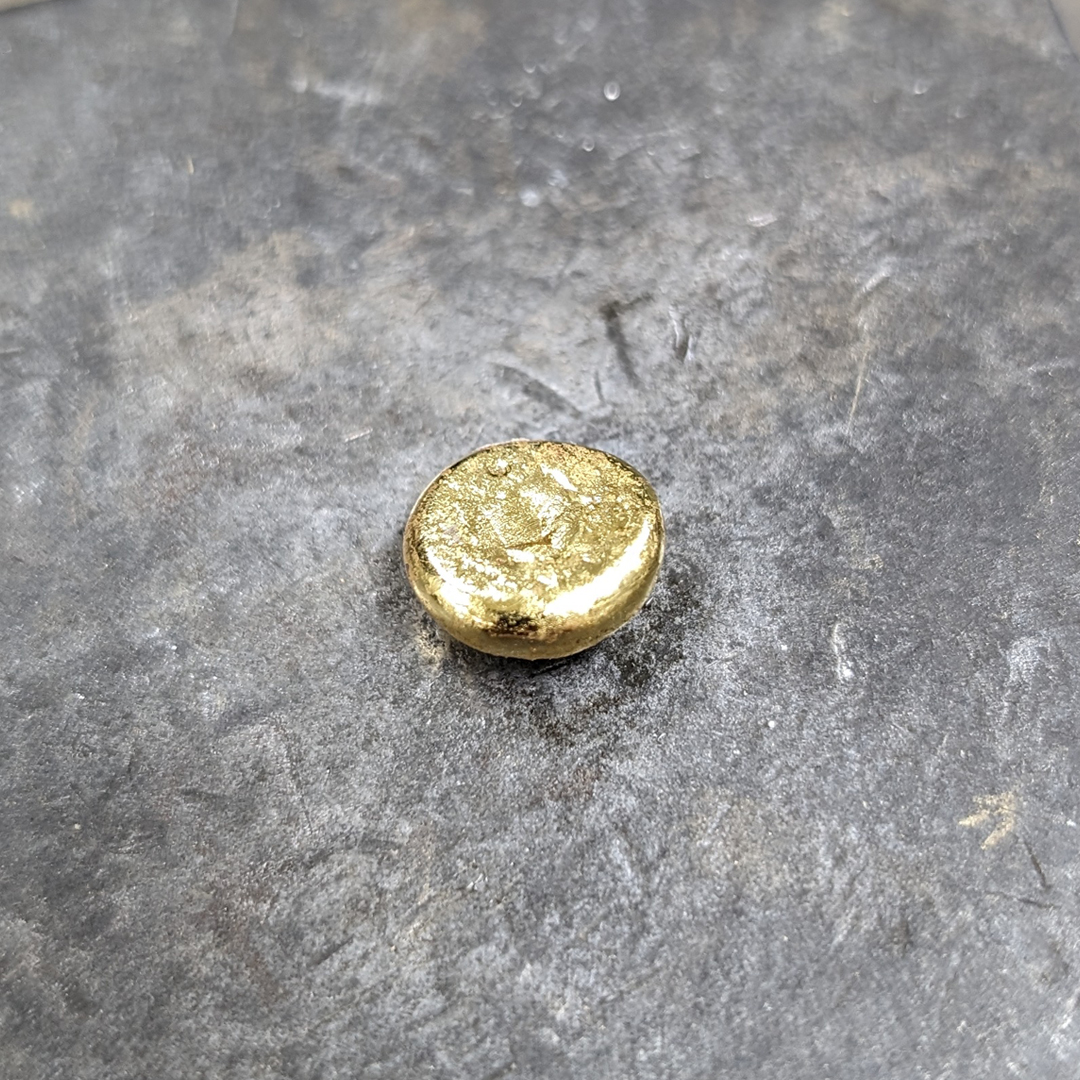
It has turned into a mass of raw metal.
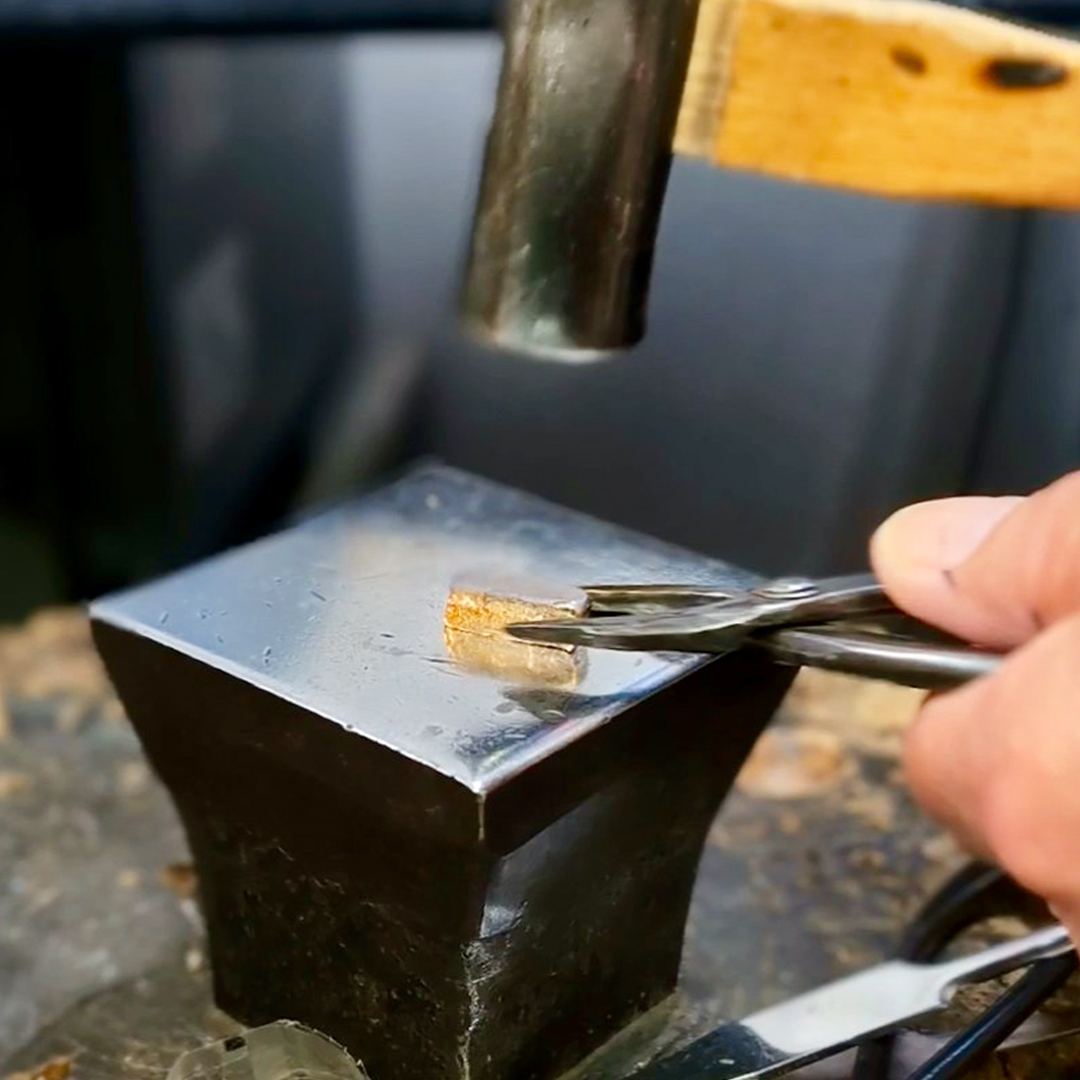
We hammer and forge it to turn it into a usable material.

It has become usable material. From here, we will start making the ring.
Custom-Made Forging
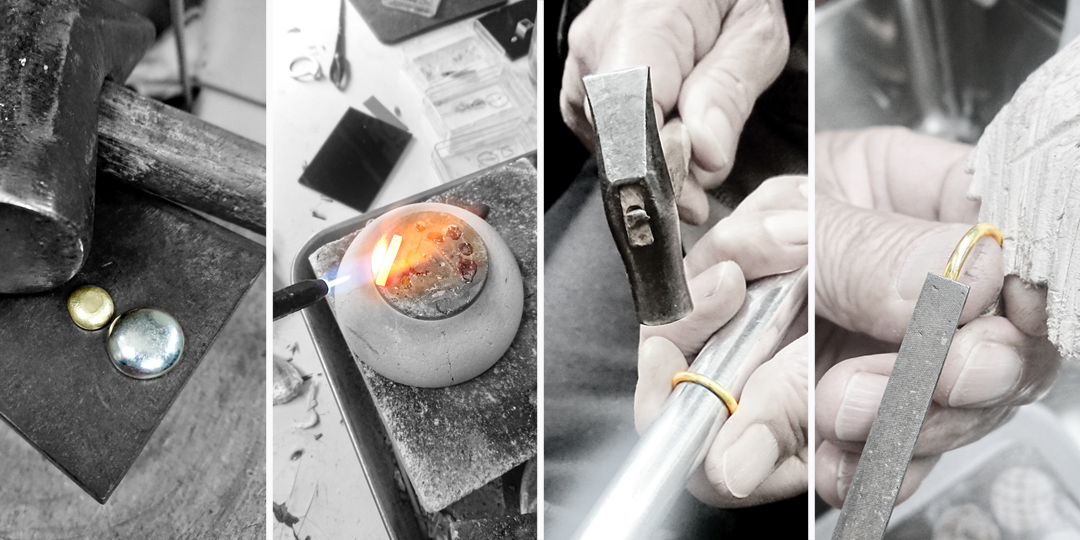
At RENSHI, we are dedicated to crafting rings through forging.
At RENSHI, we are committed to crafting wedding and engagement rings through forging.
While it may be acceptable to choose casting for fashion jewelry where appearance is a priority, we strongly recommend forging for wedding and engagement rings that are meant to be worn for a lifetime.
Forging not only offers high strength and durability but also has a substantial feel. Additionally, as every piece is handmade, each ring carries a unique and special quality that cannot be replicated.

